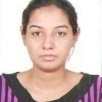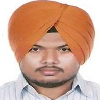International Journal of Intelligent Systems and Applications (IJISA)
IJISA Vol. 7, No. 3, 8 Feb. 2015
Cover page and Table of Contents: PDF (size: 519KB)
Biorthogonal Wavelet Transform Using Bilateral Filter and Adaptive Histogram Equalization
Full Text (PDF, 519KB), PP.37-43
Views: 0 Downloads: 0
Author(s)
Index Terms
Fusion, Preprocessing, Adaptive histogram, Resampling, Wavelets
Abstract
Image fusion is a process of combining data from multiple sources to achieve refined or improved information for making decisions. It has many applications. When we use images with a similar acquisition time, the expected result is to obtain a fused image that retains the spatial resolution from the panchromatic image and color content from the multi-spectral image. In recent time different methods have been developed. These methods are both in spatial domain and in wavelet domain. Out of these two the wavelet domain based methods are more suitable as they are capable to handle the spatial distortion produced by the spatial domain. In this paper the proposed method is compared with principle component analysis, discrete cosine transform and also with biorthogonal wavelet transform in which bilateral filter and adaptive histogram is not present. This comparison is on the bases of different parameters. Biorthogonal wavelet transform is capable to preserve edge information and hence reducing the distortions in the fused image. It has two important properties wavelet symmetry and linear phase which are not present in spatial domain. The performance of the proposed method has been extensively tested on several pairs of multi-focus and multimodal images. Experimental results show that the proposed method improves fusion quality by reducing loss of significant information available in individual images.
Cite This Paper
Savroop Kaur, Hartej S. Dadhwal, "Biorthogonal Wavelet Transform Using Bilateral Filter and Adaptive Histogram Equalization", International Journal of Intelligent Systems and Applications(IJISA), vol.7, no.3, pp.37-43, 2015. DOI:10.5815/ijisa.2015.03.05
Reference
[1]G. Liu, Z. Jing, S. Sun "Image fusion based on an expectation maximization algorithm” Shanghai Jiaotong University Information and Electrical Engineering Shanghai 2003.
[2]P. Shah, S. N.Merchant and U. B.Desai, “An efficient spatial domain fusion scheme for multifocus images using statistical properties of neighbourhood,” Multimedia and Expo (ICME), pp. 1-6, 2011.
[3]H. Chen, “A multiresolution Image Fusion based on Principle Component Analysis, “Fourth International Conference on Image and Graphics, pp. 737-741, 2007.
[4]R. Singh, R. Srivastava, O. Prakash and A. Khare, "DTCWT based multimodal medical image fusion", in proc. of International conference on Signal, image and video processing, January 2012, pp.403-407, IIT Patna.
[5]H. H. Wang, “A new multiwavelet based approach to Image Fusion”, Journal of Mathematical Imaging and Vision, vol.21, pp.177-192,
[6]G.Piella, “A general framework for multiresolution image fusion: from pixels to regions, Information Fusion,” Vol. 4, No. 4, pp. 259-280, 2003.
[7]V. P. S. Naidu and J. R. Raol, “Pixel-level image fusion using wavelets and Principal Component Analysis”, Defence Science journal, Vol.58, No 3, pp. 338-352, 2008.
[8]S. Daneshvar, H. Ghassemian, “MRI and PET Image Fusion by combining IHS and Retina-Inspired models”, Information Fusion Vol.11, No.2, pp.114-123, 2010.
[9]Anjali Maviya, S.G. Bhirud, "Objective criterion for performance evaluation of Image Fusion Techniques", International Journal of Computer Applications (0975 - 8887) Volume 1 - No. 25, 2010.
[10]J. J. Lewis, R. J. O'Callaghan, S. G. Nikolov, D. R. Bull and C. N. Canagarajah, “Region-based image fusion using Complex Wavelets”, 7th International conference on Information Fusion (Fusion 2004),International Society of Information Fusion (ISIF), Stockholm, pp. 555-562, 2004.
[11]W. Sweldens, “The Lifting Scheme: A Construction of Second Generation Wavelets”, SIAM J. Math. Anal., 1997.
[12]W. Sweldens, “The Lifting Scheme: A Custom Design construction of Biorthogonal Wavelets,” Appl. Computer. Harmon. Anal., Vol. 3, 1996.
[13]Ujwal Patil, Uma Mudengudi, “Image Fusion using hierarchal PCA”, International Conference on Image Information Processing (ICIIP 2011), 2011.
[14]Om Prakash, Richa Srivastava, Ashish Khare “Biorthogonal wavelet transform based image fusion using absolute maximum fusion rule”, Proceedings of IEEE Conference on Information and Communication Technologies (ICT 2013),2013.
[15]VPS Naidu, “Discrete Cosine Transform based Image Fusion Techniques”, Journal of Communication, Navigation and Signal Processing Vol. 1, No. 1, pp. 35-45, January 2012.

